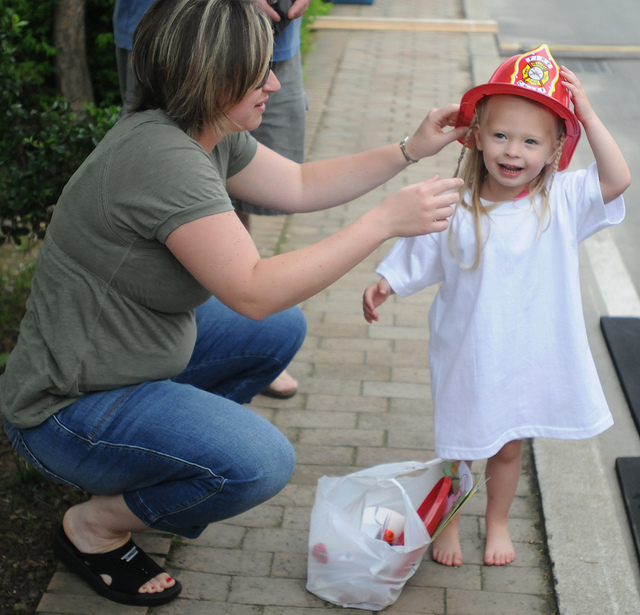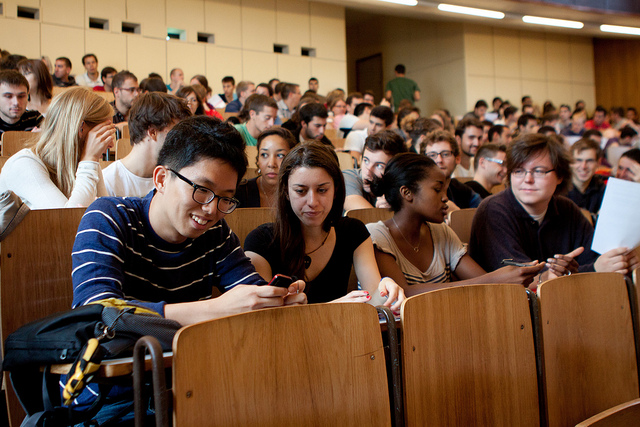Many of us grew up hearing about the challenging situations that our parents overcame- challenges that we do not have to face today, and for which we should be grateful. We hear something like, “When I was young, I had to walk four miles on a dirt road to school every day,” and, “In my family, we often ate cabbages because we couldn’t afford other vegetables.” Perhaps this points to the idea that parents have faced and overcome difficulties so that their children would not have to deal with them. On the surface, that makes sense. However, this is increasingly a more complex issue related to the stresses that students are facing today. A steadily increasing number of students (about 30-35%) are experiencing clinically signficant mental health problems, spurring a series of studies on the phenomenon to determine the causes, extent and solutions to this issue.
As a student myself, who has experienced mental illness, I wanted to determine the root of this perceived crisis, and more importantly, what can be done now to support college students battling mental health issues. To dive deeper into this subject, I recently interviewed Dr. Gregg Henriques, author of The Theory of Knowledge series and director of the Combined Clinical and School Psychology Program at James Madison University. Dr. Henriques is actively involved in improving mental health resources, such as education about the mental health and psychological functioning to help students and other individuals cope with distress.
What factors do you think contribute the most to stress on college students?
There are a number of different issues that are likely leading to this issue. There is an argument to be made that the pressures and demands on students have increased. Students carry a lot more expectations today than they did a few years ago. As our opportunities grow, competition to achieve higher has increased. There is a widespread idea that you have to have everything to be competitive. Parents often hand this idea down to students, and these demands create a lot of stress and pressure. The exams are also a huge contributor to the stress, that is why we recommend to try with this ielts preparation course to obtain higher scores.
The social media and technology explosion may also be a significant contributing factor to the observed increase in student mental illnesses. Six or seven years ago, there were no smartphones. In 2007, there was no Facebook. There has been a dramatic change in our society in terms of information technology. But along with that, we need to keep in mind that we are social apes; we have basic needs for community and connectedness. As our lifestyles change as a result of new technology, there may be more and more of a mismatch between the lifestyles we evolved to live and the current ones we actually are living and this might create mental health problems.
 In the Photo: A parent and child attend Family Safety Day. Photo Credit: Flickr/USAG-Humphreys
In the Photo: A parent and child attend Family Safety Day. Photo Credit: Flickr/USAG-Humphreys
Another contender for why modern students are in distress is that they are struggling with existential confusion. People are not sure how to get purpose out of their their lives. Look at the political landscape, for example. We witness massive polarization and chaos. The magnitude of diversity causes massive amounts of confusion about trying to develop an adult autobiographic identity.
What can we do about this now? Where do we start in resolving this problem?
I don’t think we have done a good job—indeed one could say we have done a horrible job—educating people about human consciousness and mental health.
I think a good example of this is the disease pill model, which gives the message that if you are depressed, you need to take a pill because you have a chemical imbalance in your brain. We also tend to receive the message that people should just be happy; but there are actually really good reasons for why they are anxious, they don’t understand why their needs are not getting met. The messages that folks receive justify alienating themselves from important emotions. We need more clarity about how people function and we need to educate people about their emotions, as people are very unaware about these issues.
Related Articles: “THE TRUTH ABOUT BURNOUT AND SUICIDE AMONG PHYSICIANS” by ALESSIA MINICOZZI
“WHEN CHILDREN NEED US MOST, WE CAN DO BETTER” by AVI BAEHR
What people want from you publicly, for example, might not be what you want to do privately. You feel differently privately and think other things privately, which means that there’s a conflict between the need to be known and valued and what you do publicly. When kids are in middle school, a little clique might want to see you be a certain way, and if you are different, your peers might not approve of you. If that is very different from how you feel, this creates disharmony. As students experience this, if they are not coached, they can develop disharmony between what they think they should feel and how they actually feel. They might think, “but I don’t feel this way, why don’t I feel this way?” People don’t have maps about what they are feeling. College students can be educated about this broadly in this information technology age. We need to figure out how can we get this information to a large number of students so they can be more psychologically minded and aware about what’s going on. Then we go into acceptance and change towards more optimal psychological health.
 In the Photo: Parents accompany a student graduating from college. Photo Credit: Flickr/Thomas Xu
In the Photo: Parents accompany a student graduating from college. Photo Credit: Flickr/Thomas Xu
How much of a responsibility do you think that educators and parents have toward helping students with academic stress?
I think parents and educators have good intentions, but one issue that might be contributing is the way folks handle criticism and try to protect kids from injury. This brings us to the concept and perception of self-esteem. According to psychologists from Psychology Phd Programs, found that low self-esteem was a major vulnerability for mental health problems. People took that information, misinterpreted what it meant, and created an enormous push to protect kids’ self-esteem. Now, we don’t want any type of environment in which kids get criticized. I was a soccer coach recently and I was told that coaches are not allowed to criticize kids, that they must emphasize the positive. This is giving kids the message that they can’t take criticism, and this is what you don’t want to do. The message conveyed by such practices is this:
I see you as fragile, that you would crumble underneath that pressure, so I must protect you in every way that I can.
Blended with social media, this has led to the observation of helicopter parenting. Parents have become increasingly oriented to protecting needs and sensitivities of children. There is now a cultural shift in which parents hover around kids. Sure, kids are about half as likely to die today, so careful parenting is beneficial in that way. But before such parenting practices developed, kids learned a lot from being left alone. They learned how to deal with hardships. Life involves hardships. The idea that negative feelings and injuries are too painful to live through gives students the sense they can’t manage them, and they are not resilient.
– – – – – –
There is a stark difference in the way in which people are being instructed to cater to sensitivities, and the way which people are being told to instead bring “tough love” to kids so that future generations do not have similarly spiking mental health issues. What is the right thing to do? How “tough” is too tough, and how nice is too nice? I believe that a middle ground is yet to be utilized widely. While current college students learn to map out their emotions and make peace with their psyche, younger children need to be treated with something of a more expansive “constructive criticism” practice. Instead of preventing children from walking into difficulties, or creating more problems that pile onto their challenges, we can help them face problems much like how we have been teaching kids to ride bicycles: perhaps start with training wheels, hold their handle bars, and then let them ride on their own. Let them fall, let them try again, let them ride on their own and then explore different terrains so that one day, they are eager to mount their bikes and fearlessly take them far away and enjoy the ride. We need to learn to cultivate an environment in which they develop resiliency and respect their own feelings rather than quarantining or attacking their minds.
If you or someone whom you know may be experiencing mental illness and needs help, please reach out to the National Alliance on Mental Illness support hotline at 1-800-950-NAMI (6264). You can also learn more by visiting their webpage and clicking here. If you are not in the United States, you can contact a local mental health agency for support services.
Cover Photo: “ISC Orientation 1st Meeting Fall 2011.” Photo Credit: Flikr/Jirka Matouse










